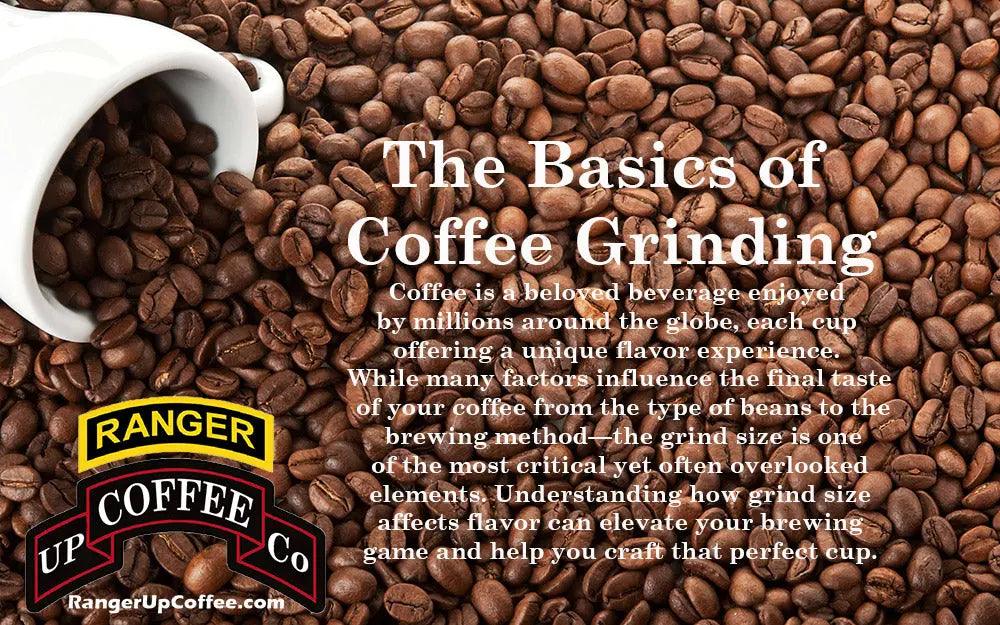The Basics of Coffee Grinding
Before diving into how grind size impacts flavor, it’s essential to understand what we mean by “grind size.” Coffee grind size refers to the fineness or coarseness of the coffee grounds. This can range from a fine powder (similar to flour) to very coarse granules (like sea salt). The grind size is typically categorized as:
- Extra Fine: For espresso machines.
- Fine: For Aeropress and Moka pots.
- Medium: For drip coffee makers and pour-over methods.
- Coarse: For French presses and cold brews.
The Relationship Between Grind Size and Extraction
At the heart of how grind size affects flavor is the concept of extraction. Extraction is the process by which water dissolves soluble compounds from coffee grounds. Different grind sizes influence the rate of extraction, which in turn affects the flavor profile of the coffee.
- Surface Area Exposure: Finer grinds have a larger surface area relative to their volume, allowing water to interact more readily with the coffee particles. This means that fine grinds typically extract flavors more quickly and intensely, often leading to a more robust and sometimes bitter taste. Conversely, coarser grinds have less surface area, resulting in slower extraction and milder flavors.
- Contact Time: The brewing method plays a significant role in determining the optimal grind size. Methods that require shorter contact times, like espresso (which brews in about 30 seconds), benefit from finer grinds. In contrast, methods that use longer brewing times, like French press (which steeps for about four minutes), work better with coarser grinds to prevent over-extraction.
Flavor Profiles and Grind Size
The flavors extracted from coffee are a complex interplay of acids, sugars, oils, and other compounds. The grind size can highlight or mute certain flavor characteristics:
- Fine Grinds: Often lead to a stronger, more concentrated brew. This can enhance desirable flavors, such as sweetness and acidity, but may also bring out unwanted bitterness and astringency if over-extracted.
- Medium Grinds: A versatile choice that balances extraction well, yielding a well-rounded cup. This grind size is ideal for most drip coffee makers and pour-over techniques, offering a balanced flavor profile without overwhelming bitterness.
- Coarse Grinds: Produce a milder flavor, which is particularly suited for brewing methods like the French press or cold brew. These methods promote a smoother and less acidic cup, emphasizing sweetness and body while minimizing bitterness.
Over-Extraction vs. Under-Extraction
Grind size can lead to two common extraction issues: over-extraction and under-extraction.
- Over-Extraction occurs when the water extracts too many compounds, including undesirable bitter notes. This is more likely to happen with fine grinds, especially if the brew time is extended. If your coffee tastes overly bitter, it may be a sign to adjust your grind size to coarser or reduce the brewing time.
- Under-Extraction happens when not enough flavors are extracted, often resulting in a sour or weak cup. This can occur with coarse grinds, especially in methods that require a shorter brewing time. If your coffee tastes flat or sour, consider grinding your coffee finer or increasing the brew time.
Experimentation and Personal Preference
Finding the ideal grind size isn’t a one-size-fits-all scenario. It often involves personal preference and experimentation. Here are some tips to help you dial in the perfect grind for your brewing method:
- Start with the Recommended Grind Size: Begin with the grind size typically recommended for your brewing method. Adjust in small increments based on your taste.
- Taste Testing: Brew multiple batches with different grind sizes to see how they impact flavor. Take notes on what you like or dislike about each variation.
- Consider Freshness: Freshly ground coffee has more vibrant flavors. Invest in a good grinder that allows you to grind your coffee just before brewing.
- Quality of Coffee Beans: The quality of your beans will also influence how grind size impacts flavor. High-quality, freshly roasted beans tend to yield better results, regardless of grind size.
In the quest for the perfect cup of coffee, the grind size is a crucial factor that significantly influences flavor. By understanding the relationship between grind size and extraction, you can tailor your brewing to enhance your favorite flavor notes and mitigate undesirable ones. So next time you brew a cup, pay close attention to your grind size—it just might be the key to unlocking your best coffee experience yet. Happy brewing!


0 comments